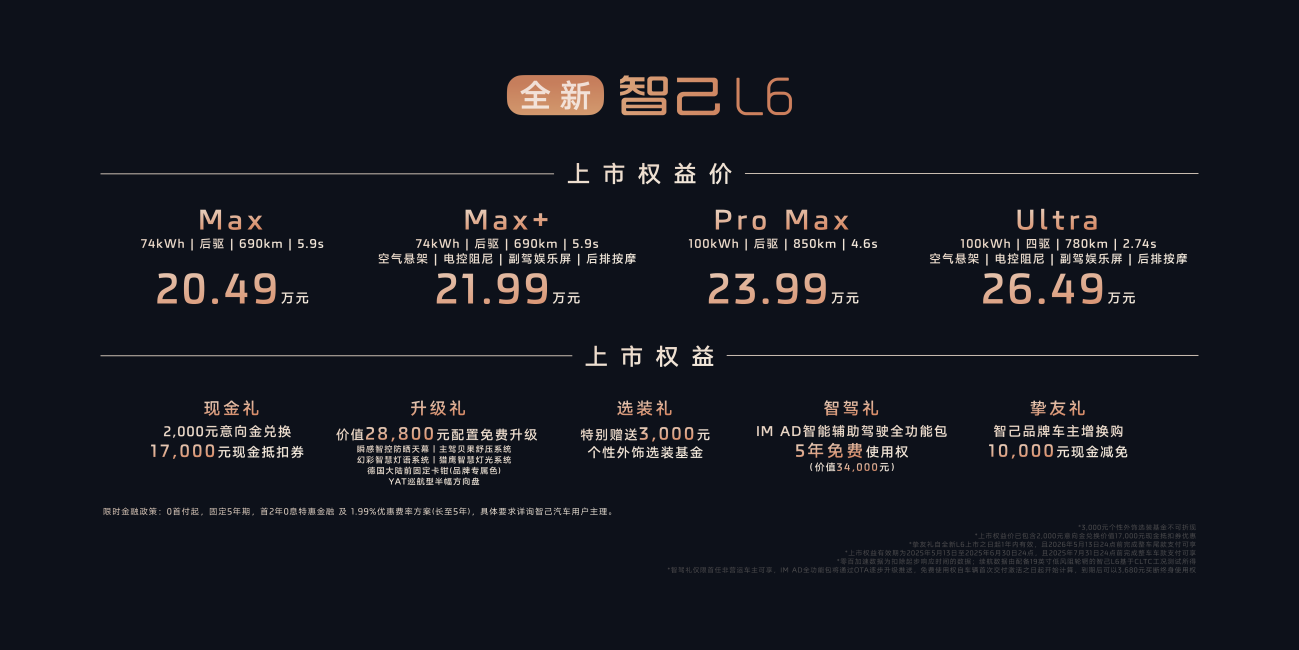
When smart electric vehicles become a standardized term in the industry, when senior executives of auto companies recite those incredibly powerful parameters at every press conference, and when leaders repeatedly emphasize in interviews that cars are built for users, can today's cars really solve the pain points of contemporary consumers?
In fact, the probability that users will encounter artificial intelligence that is artificially stupid, the probability that the driving assistance function will encounter a scenario that it cannot handle resulting in a "breakpoint experience", and the probability that car companies will make their cars ugly for the sake of energy efficiency is still quite high.
It’s already 2025. Is there no company that can integrate the technological knowhow of China’s smart electric industry and produce products that accurately understand the aesthetic tastes and needs of users? The answer is obviously yes.
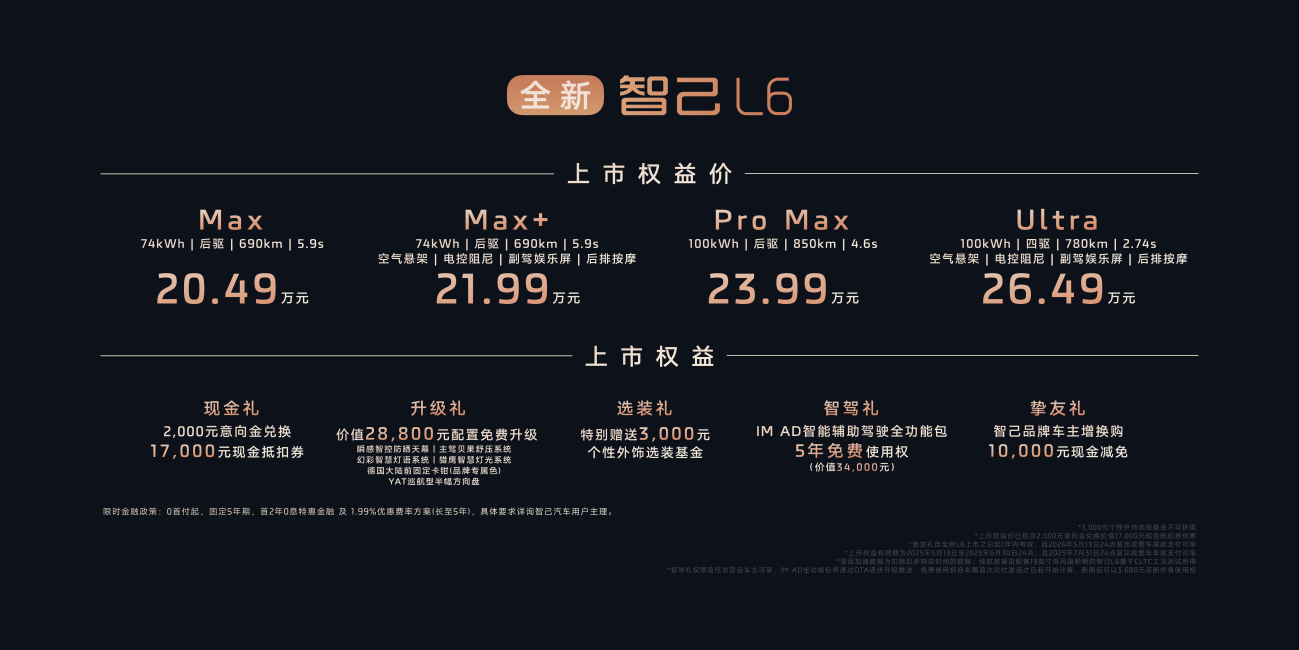
On May 13, the new Zhiji L6 was officially launched on the market with a starting price of 204,900 yuan, marking the beginning of the second half of the smart car era.
The next generation of hard-core technology defines the generational gap in "true intelligence"
While the industry is obsessed with piling up the number of LiDARs and boasting about the TOPS value of computing power, the new Zhiji L6 chooses to use a central integrated electronic and electrical architecture to reshape the "foundation" of smart cars. The "super brain" composed of Qualcomm 8295 chip and NVIDIA Orin X chip no longer fights alone, but realizes the qualitative change from "responding to instructions" to "predicting intentions" through unified decision-making. On rainy nights, turn on the rainy night mode to enhance vision, the auxiliary driving system takes over when entering and exiting ETC at high speeds, and the rear-wheel steering and wire control brake intervene when reversing on narrow roads. The initial implementation of this embodied intelligence makes the vehicle no longer a machine that executes code, but a "travel partner" that can perceive the environment and evolve autonomously.
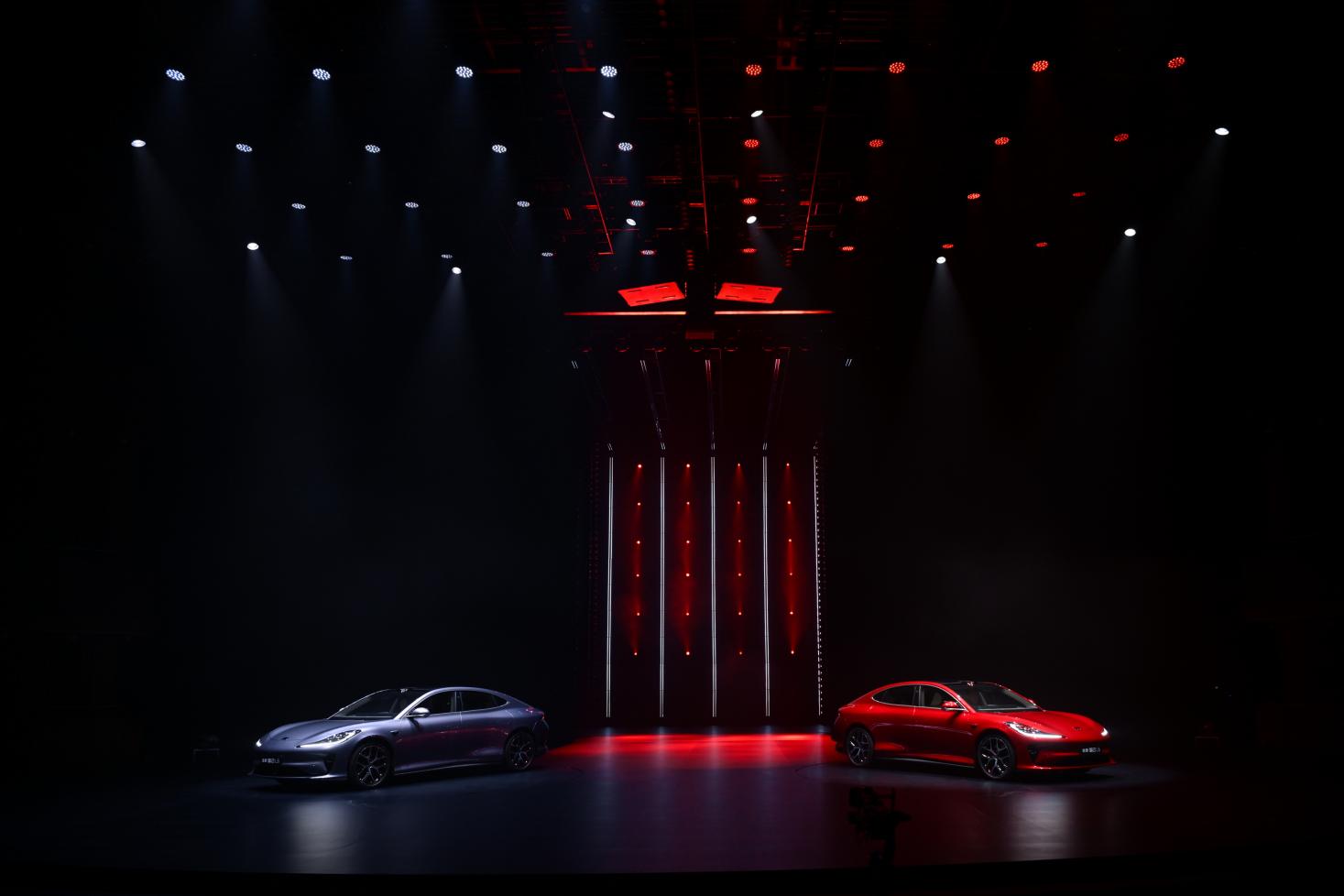
The new car is equipped with the Lizard Digital Chassis 2.0, which is subversive in that it turns the technical privileges of million-level luxury cars into universal configurations. The two-way 18° rear-wheel steering combined with intelligent wire-controlled braking reduces the turning radius of the four-wheel drive version to 4.39 meters, which is more flexible than the A00-class microcar with a length of only 3 meters; the tire blowout stability control system adjusts the body posture hundreds of times per second, making high-speed tire blowouts, which have a very high accident rate, controllable. It can be said that the new Zhiji L6 has achieved safety equality with technology.
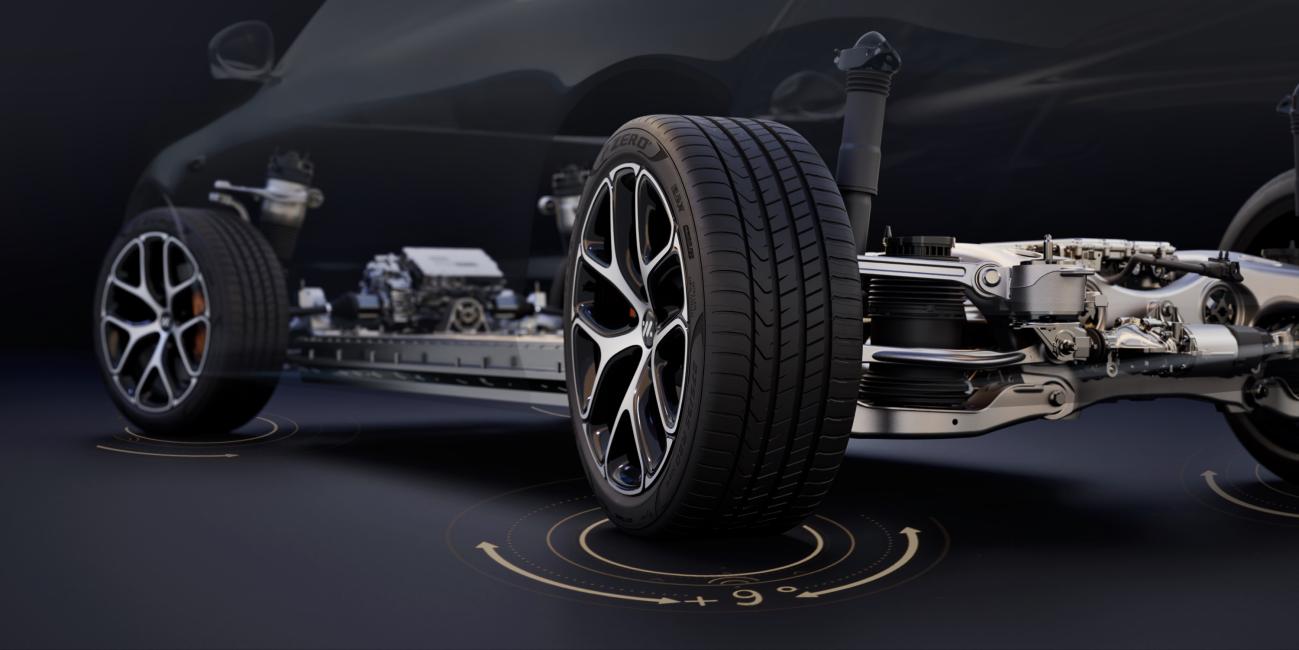
Today, AI has become a buzzword in press conferences, but the real AI experience is very different. An excellent AI experience should not first make users adapt to the machine, but make the machine understand humans. The IM AD3.0 mapless city NOA installed on the new Zhiji L6 abandons the reliance on high-precision maps, and realizes full access to urban areas, highways, and parking lots through an end-to-end large model, rejecting the embarrassment of a "breakpoint experience".
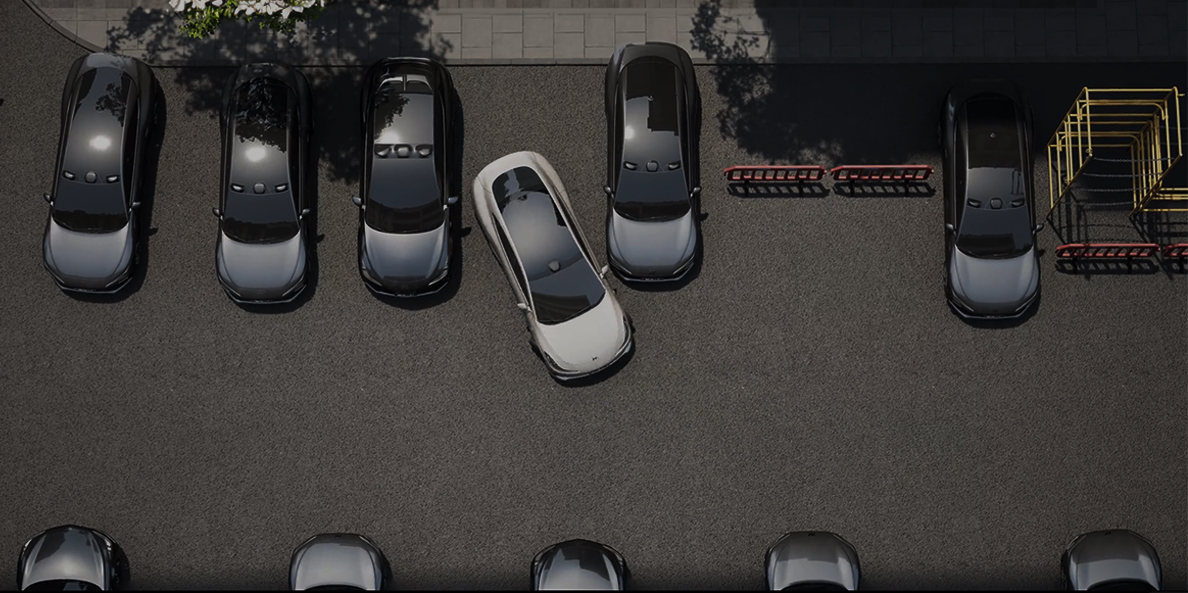
The IMOS 4.0 ecological cockpit reconstructs the relationship between people and cars with "No Touch Interaction". You can imagine a scenario like this: when users order food through navigation, AI Agent automatically calls Douyin's local content to recommend restaurants. After a tiring day, when you get off work and encounter a sudden rainstorm, the Rainy Night Mode 2.0 + DZT dynamic area tracking function links the cameras around the car body to enhance the blind spots of vision and escort users. The ultimate form of AI technology is to make users unable to perceive the existence of AI, but they can arrive at every journey with peace of mind.
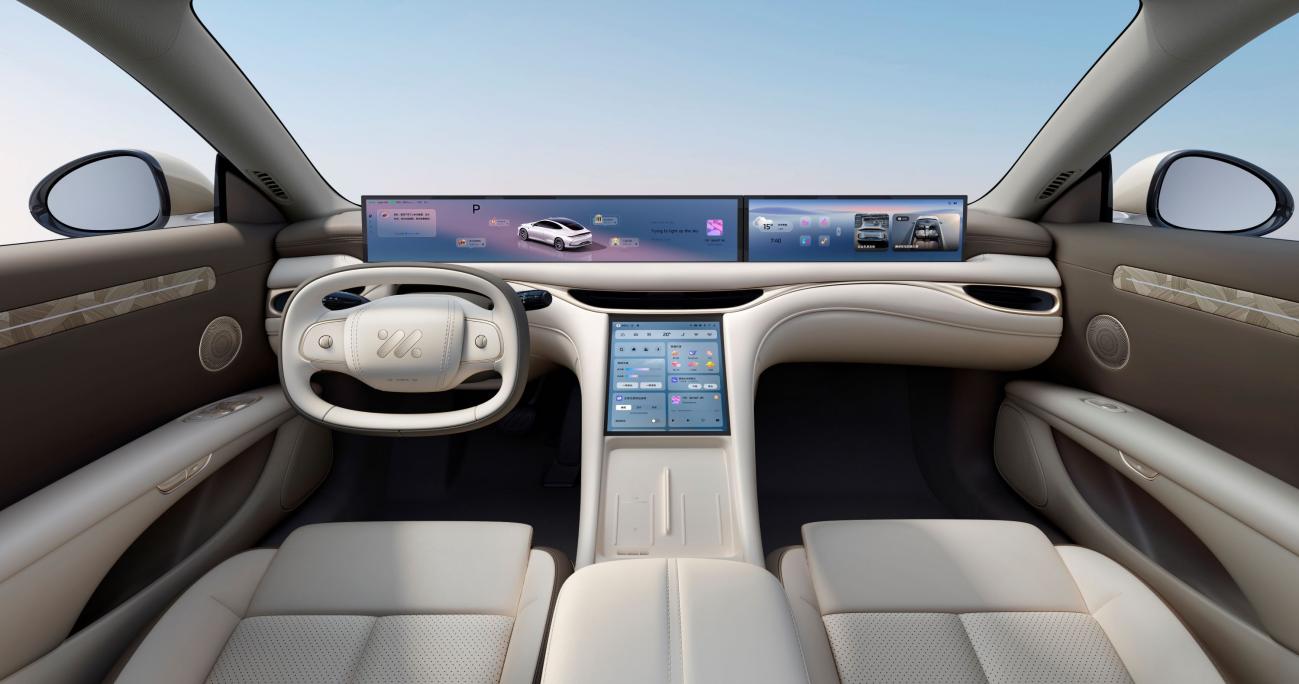
Haute couture aesthetic philosophy: design does not need to compromise functionality
As the design of smart electric vehicles converges, the new Zhiji L6 does not give way to aesthetics over functionality, but fuses art and technology into a declaration of urban life. The golden ratio body jointly created with Central Saint Martins College interprets modern art aesthetics with "waistline" curves and urban travel shining outfits. The six artistic car paints led by Morandi Purple and Matisse Red break the stereotype that "performance cars must be black warriors." The ISC smart light language system at the rear of the car supports customized patterns and barrage interactions. Users can edit holiday greetings or personalized slogans to turn the rear of the car into a "mobile social canvas."

The ultimate pursuit of functional aesthetics is reflected in every detail. For example, the breakthrough of the instant intelligent sunscreen canopy is that it uses NMAT nano-matrix technology to achieve 0.1 second light adjustment, so that urban youth no longer have to worry about "scenery or sun protection" - with a 99.99% UV isolation rate, you can enjoy both the Bund night view and afternoon sun protection. The Bagel stress relief system uses the three-level soft and hard adjustment of the seat cushion and wave-like dynamic massage to turn the car from a "transportation tool" to a "stress relief artifact" during commuting, curing the mental exhaustion of urban people.
The safety bottom line of state-owned enterprises: Do not treat users as “guinea pigs”
In Zhiji's car-making logic, safety is not an optional item on the configuration table, but the dignity line of a large manufacturer. All models are equipped with laser radar and 8km-130km/h full-speed AEB as standard, rejecting the industry's unspoken rule that "only the top configuration can be safe."
In terms of battery safety, which has attracted much attention, the new Zhiji L6 is ahead of and better than the new national standard. The new national standard in 2026 requires that the battery should be monitored for no fire or explosion within 2 hours after a collision, while this car can achieve "monitoring for no fire or explosion for 24 hours."
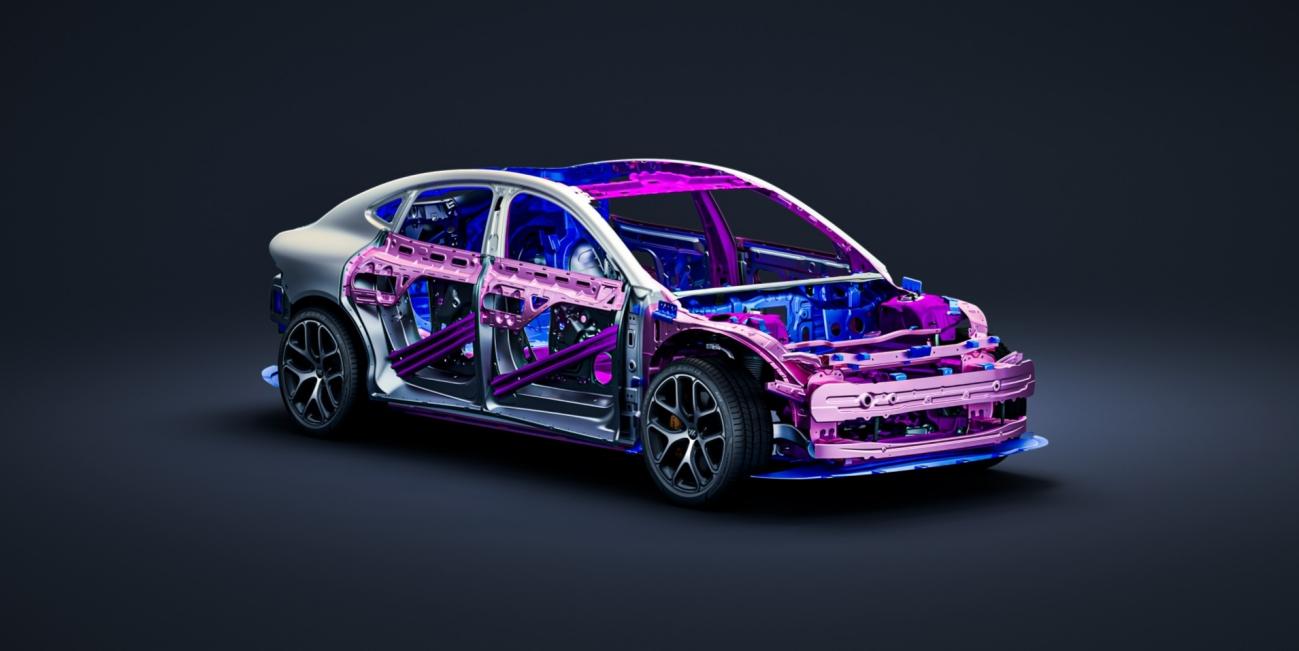
In terms of body structure strength, the ten-vertical and ten-horizontal submarine cage body, combined with submarine-grade ultra-high-strength hot-formed boron steel, can provide no-dead-angle safety protection in omnidirectional collision conditions , and the triple redundant door unlocking system ensures unobstructed escape routes after an accident.
Technology inclusion: ending the "top configuration trap"
While other competitors offer 800V supercharging, laser radar, and digital chassis as exclusive features for high-end models, the new Zhiji L6 is equipped with all-series standard features. The entry-level version has over 100 features, including an ultra-long battery life of 690 kilometers, Lingxi digital chassis 2.0, Orin X+8295 dual chips, and four-door double-layer silent glass.
What is rare is that for old users who have purchased the 1.0 model of the Lizard chassis, the official promised to open the software and hardware upgrade of the tire puncture stability system in June. This kind of "equal treatment for new and old car owners" is particularly precious at the moment when "futures-style car manufacturing" is prevalent.
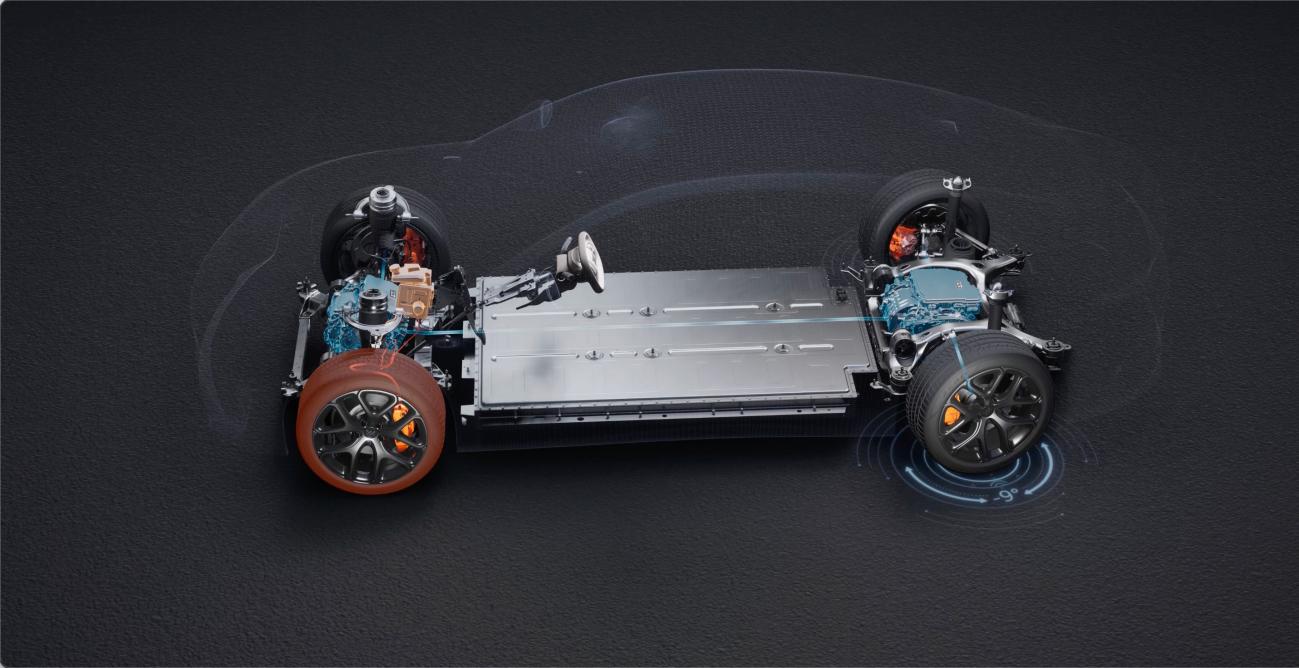
While new forces are still educating users with "software subscription fees", the four versions of the new Zhiji L6 have accurately divided the needs: the Max version with a range of 690km is a cost-effective choice for urban newcomers, the Max+ version with air suspension and a large entertainment screen on the co-pilot seat meets the user's comfort needs, the Pro Max version with a range of 850km solves the anxiety of cross-city commuting, and the Ultra version with a 0-100 km acceleration in 2.74 seconds is dedicated to the pursuit of ultimate performance control. This product logic of "there is always a car that understands you" redefines the connotation of "making a good car for users".
The borderless experience brought by the central integrated architecture, the industry shock caused by equal security rights, and the responsibility of state-owned enterprises demonstrated by technology accessibility have jointly outlined the competition landscape of the second half of smart cars. On the new Zhiji L6, users no longer need to worry about purchasing paid services because it has achieved "no shortcomings" in intelligence.
at last
In the second half of the smart electric era, the deciding factor is no longer a parameter arms race, but awe for users' real needs.
The arrival of the new Zhiji L6 confirms a simple truth. True intelligence is to hide technology behind the experience; true safety is to protect every ordinary journey with redundant design; true refinement is to perfectly balance design and function to echo the true nature of life.
When the industry was trapped in the diode thinking of "involution" and "disruption", Zhiji chose a more difficult path. With the solid foundation of a national team manufacturer, it transformed its technological accumulation into user-perceivable value and redefined the evaluation system of smart cars with "experience without shortcomings".
The launch of the all-new Zhiji L6 may be the key to China's auto industry's move towards the high-end market. It does not chase the trend, but defines the direction; it does not please everyone, but becomes the "natural partner" of a group of people. This car is not only a breakthrough in a product, but also indicates that the era of smart cars returning from "parameter games" to "userism" has arrived.